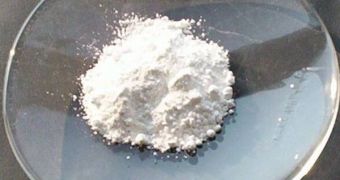Zinc oxide has been in use in the nanotechnology industry since its early days, and researchers in Saudi Arabia have now devised a non-toxic and environmentally friendly method of producing it en masse. In a paper published in the International Journal of Nanoparticles, the scientists show that this class of nanoparticles can be used safely for medial and other sensitive applications from now on, ScienceDaily reports. Zinc oxide is mostly obtained in the form of nanorods.
These rods usually have less than 100 nanometers in diameter, which means that they have a lot of uses in many areas of science. They are employed, for instance, in breakfast cereals, where they act as a source of zinc, which is essential for the good functioning of the human body. They also appear in a large array of cosmetic products, sunscreens and lotions, and are known to efficiently protect the skin against harmful UV radiation, which can damage DNA and trigger the formation of skin cancer.
The chemical also plays an important part in gas-detector technologies. When gas molecules are absorbed in such devices, the oxide modifies their electrical properties in a detectable manner. It has also played a major part in the appearance of a new class of lasers and LEDs, and has been successfully used as a a biomimic membrane, able to immobilize and modify biomolecules.
The new production method, which was devised by researchers M.A. Shah and M.S. Al-Shahry, both at the King Khalid University, in Abha, and A.M. Asiri, from the King Abdul-Aziz University, in Jeddah, relies solely on a chemical reaction between water and zinc powder at low temperatures for the formation of nanoparticles and nanorods. “Since water is regarded as a benign solvent and non-toxic, the product (nanorods) could be used safely for biomedical and other applications,” Shah explains.
With the new technique, nanorods between 20 and 100 nanometers can be produced in large quantities, and with a minimum energy usage. Electricity is employed for ultrasound waves, which blast the water/zinc powder mixture for a few minutes after the chemical reaction starts. The entire mixture is then heated to about 200 degrees Celsius for 24 hours. This is a significantly lower temperature than in other methods. No dangerous chemical solvents or catalysts are used in the new approach.

 14 DAY TRIAL //
14 DAY TRIAL //